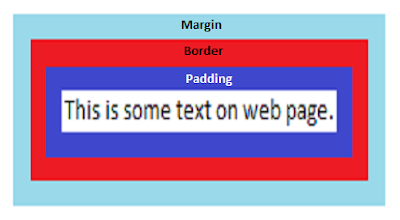Margins, padding and borders are all part of the Box Model. The Box Model consists of following patterns.
- In the middle you have the content area
- Surrounding content area you have the padding
- Surrounding padding you have the border
- Surrounding border you have the margin.
Visually, it can be represented as follow.
 |
| box model |
